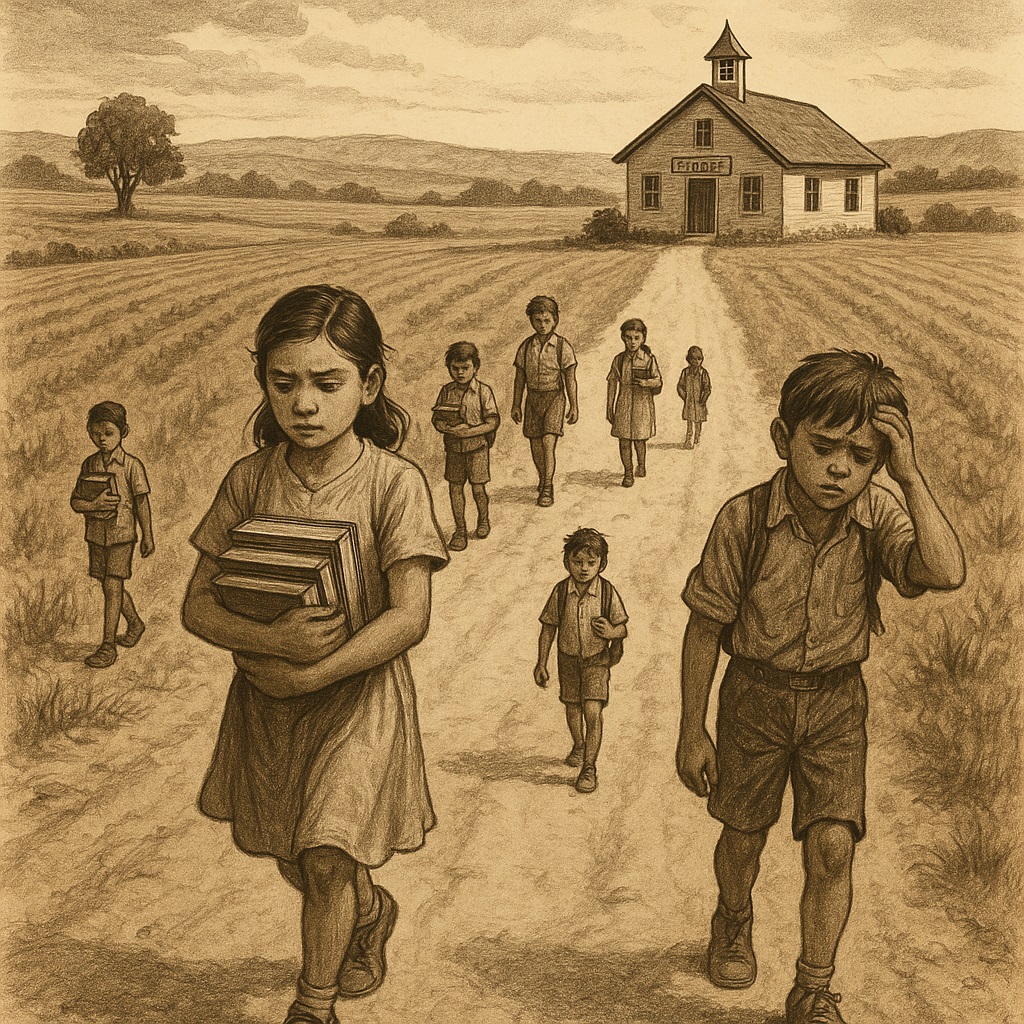
The phrase Rural Schools in Crisis reflects the growing gap between rural and urban education. While urban districts often benefit from better technology, more funding, and stronger teacher support, rural schools operate with outdated facilities and tighter budgets.
Nearly one in five American students attend rural schools, yet their struggles rarely receive national attention. This lack of focus deepens inequality and limits opportunities for millions of children.
Why Rural Schools Are Falling Behind
Limited Funding and Resources
Smaller tax bases in rural communities mean less money for books, extracurricular programs, and modern learning tools.
Teacher Shortages
Rural schools find it harder to recruit and retain skilled teachers. Low pay and professional isolation often drive educators to urban or suburban areas.
Distance and Accessibility
Some students travel long distances daily, limiting study time and extracurricular involvement. Many rural communities also lack reliable broadband, making digital learning difficult.
The Human Cost of the Rural Education Gap
Achievement Gaps
Data shows rural students often score below their urban peers on standardized tests not because of ability, but because of unequal access to quality education.
Limited Career Opportunities
Fewer advanced courses, internships, and counseling options mean rural students face limited career pathways after graduation.
Impact on Communities
When schools weaken, so do rural towns. Schools act as cultural and community anchors, and their decline hurts entire regions.
Solutions to Rural Schools in Crisis
Fairer Funding Models
More state and federal investment is needed to ensure rural students have equal opportunities.
Teacher Recruitment and Retention
Incentives like housing support, loan forgiveness, and mentorship programs can encourage teachers to stay in rural schools.
Expanding Internet Access
Nationwide rural broadband would help close the digital divide, giving rural students the same access to online learning as others.
Community Partnerships
Local colleges, businesses, and nonprofits can offer mentorship, career training, and extracurricular opportunities that rural students often lack.
Why Fixing Rural Schools in Crisis Matters to All Americans
The challenges of Rural Schools in Crisis are not isolated they affect the nation’s economy, workforce, and future. By ensuring every child has access to quality education, regardless of where they live, we strengthen both rural and urban communities alike.
Related Resources
- Politics of Education K-12 by Lonnie Palmer – a deep dive into education inequalities.
- Technology in Public Education by Lonnie Palmer
- Visit the Lonnie Palmer Blog – more insights on closing education gaps.
- Brookings Institute – What is the status of educational opportunity in rural America?
- USDA Economic Research Service – Employment & Education: Rural Education
FAQs
Q1. What does “Rural Schools in Crisis” mean?
It highlights the challenges rural schools face, such as low funding, teacher shortages, and outdated facilities.
Q2. Why do rural schools get fewer resources?
Funding often relies on local property taxes, and rural communities typically have smaller tax bases.
Q3. How does this affect students?
It creates achievement gaps, limited career opportunities, and long-term disadvantages.
Q4. What solutions exist?
Stronger funding, broadband expansion, teacher incentives, and community partnerships are key steps.
Q5. Why should urban areas care?
A strong education system benefits the entire country by ensuring equity and supporting a stronger workforce.